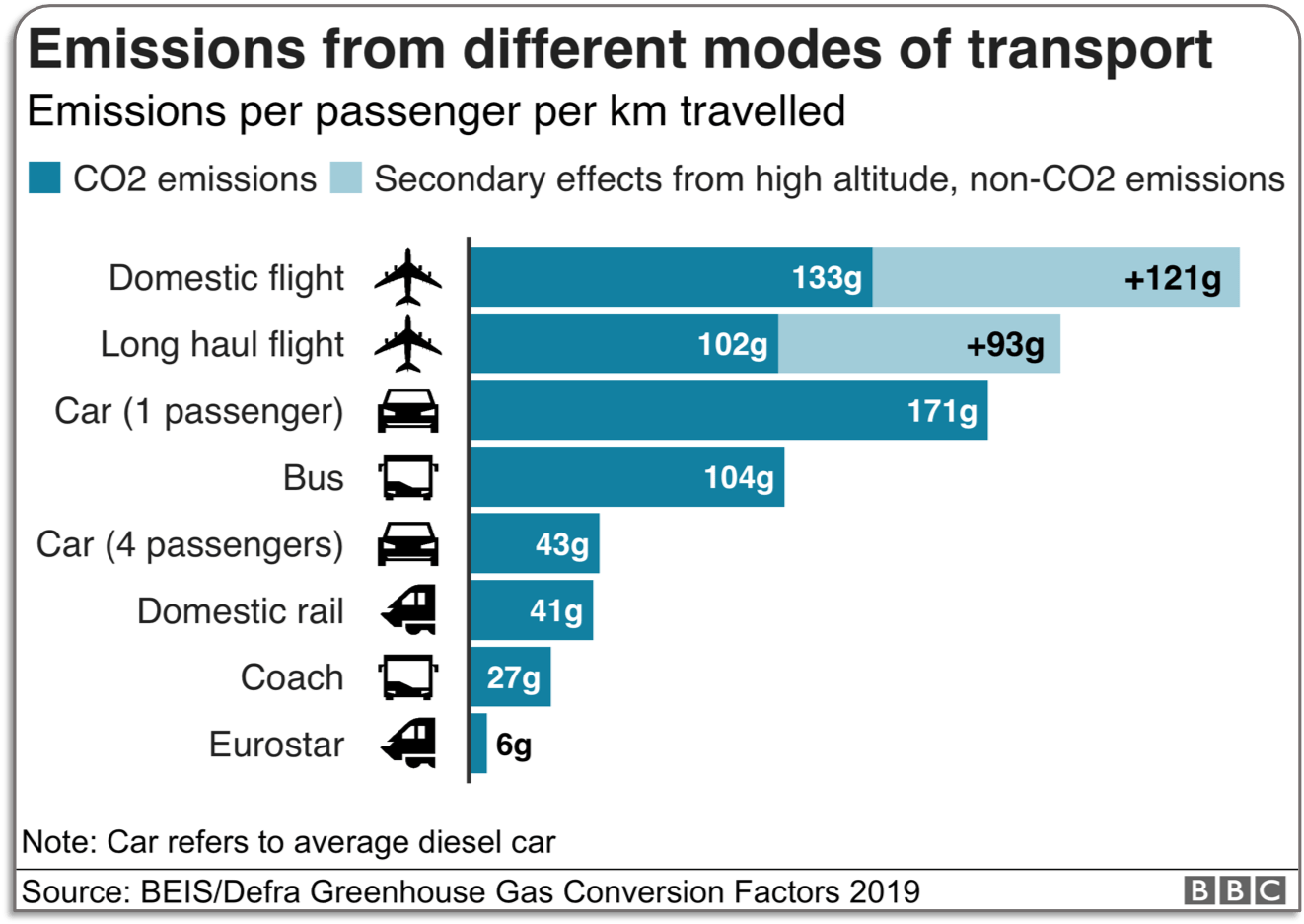How To Make Your Internal Comms More Carbon Neutral

Share
2015 marked the point in which the earth’s average temperature reached an average increase of 1℃.
Although you wouldn’t notice a 1-degree increase in your cup of coffee, this global temperature increase has had a profound impact on the environment we live in.
Here are just a handful of consequences we’ve faced from the increase:
A 2.6-inch increase in sea levels caused by melting ice caps.
Extreme weather patterns (floods, droughts, hurricanes, wildfires, earthquakes).

So, given that The International Energy Agency (IEA) estimates that global demand for energy will grow 2.1% every year, what are large organisations doing to lighten their blow on the environment?
And importantly, how can organisations reduce their carbon footprint by optimising their internal communication strategies?
1. How Are Organisations Responding To Climate Change?
A recent study revealed just 100 companies are responsible for 71% of global CO2 emissions. As such, big companies are under growing state and public scrutiny to make positive environmental reforms.
So given their large contribution to global warming made by corporations, what steps are businesses taking to become more ‘green’?
Around the world, more than 80 multinational companies have already signed the UN Climate Pact. This agreement is a pledge to set “science-based targets and create decarbonisation plans within 24 months to start bringing their emissions down to keep warming below 1.5C”.
In the UK, through similar goals or commitments to improving efficiency, 99/100 of FTSE 100 companies are making efforts to limit their impact on the environment.
Some of these shared goals include:
Aligning operational emissions levels to achieve ‘net zero’ carbon emissions and limit global warming to 1.5°C.
Sourcing x% of electricity from renewable sources by a certain year.
Source x% of manufacturing materials sustainably by a certain year.
Limiting business travel.

2. Where Does Internal Comms Fit Into This?
Not surprisingly, out of the top 10 largest organisations in the FTSE, all have employees working in overseas offices.
With such global workforces, internally communicating company messages to overseas employees can be challenging. To do so, organisations traditionally use central, leadership-hosted physical events to update their staff.
While these events are a highly engaging way to internally communicate important company information, employees often have to fly long distances to attend them.
So just how polluting is air travel? On average, an aircraft on a long haul flight releases 195g of CO2 per person, every kilometre.

If you crunch the numbers, this means an individual on a long-haul round-trip from Singapore to attend an event in London, produces 4228kg of CO2.
You might be thinking that this sounds like a lot, and that’s because it is. 4228kg of CO2 is the weight as just over two adult hippopotamus’.

With travel to internal comms events producing so much CO2, traditional event formats could make it much more difficult for companies to reduce their corporate carbon footprints and meet their strict environmental targets.
So how are organisations adapting their internal communications strategies to combat this?
Not surprisingly, 9 out of the 10 biggest companies in the FTSE 100 now host online events for internal communications so their oversees staff have the opportunity to limit their air travel.
"9 out of the 10 biggest companies in the FTSE 100 now host online events for internal communications"
But how can online events be used to make internal communications ‘greener’?
3. How Can Online Events Make Your Internal Communications Greener?
1. Make Your All-Hands Company-Wide Conference Fully Virtual
By taking your all-hands company-wide event online with a virtual event, you can eliminate the need for distant employees to take highly-polluting flights in order to attend your internal company conference.
All your online attendees need is an internet connection, a cup of tea, and to log in to the virtual event platform; where they can watch each conference session at a time that’s convenient to them.
The good thing about this is that each distant employee deciding to log in and watch the event online will significantly reduce your event’s carbon footprint. And in doing so, it will be much easier for your organisation to achieve its environmental goals.

2. Communicate Quarterly Information Online Using Webinars & Webcasts
Quarterly leadership updates often involved senior leaders presenting information to staff at a company physical event.
Although they’re a lot smaller in size and therefore less environmentally damaging than an all-hands company event, there is still an opportunity to make them greener.
Given the presentation-based nature of these events, hosting them via a webinar or webcast is the perfect ‘green’ alternative.
This could involve your senior leadership team physically presenting the results via a webcam or talking over some information-rich webinar slides to an online audience of staff.
By taking these quarterly updates online, the negative environmental impacts associated with traditional updates are reduced.
You might be thinking that by internally communicating with online events companies would miss out on the interactivity of a physical event. Well, fortunately, that’s not the case. Most high-quality online event providers boast features that allow interactivity between senior leaders and the employees they are communicating with.
These interactive features include polls, live chat, breakout rooms and even games.
3. Make Event Materials Available To Download
If you attended an internal company event and didn’t receive any printed materials, you’d be pretty surprised, right?
Like air travel, event materials like conference proceedings and pamphlets produce a lot of CO2 during their production and can, therefore, inflate an event’s carbon footprint
In fact, research has shown that, on average, the printed materials provided per conference attendee produces a whopping 1760 kg of CO2!
By live streaming your internal comms event online, you can make these event materials available as downloadable files- significantly reducing the amount of CO2 produced per attendee.
Albeit less significantly than reducing air travel, slashing the amount of event materials used will improve an event’s carbon footprint- helping the host company achieve its environmental goals.

4. Update Your Employees With An Internal Podcast
Over the past few years, podcasts have taken the world by storm. There are now over 800,000 active podcasts with over 54 million episodes currently available worldwide across various platforms.
What’s more, studies from LinkedIn show that 42 percent of people between the ages of 18-34 listen to podcasts at least once a week. This huge surge in popularity is said to be down to a number of factors:
Their ability to tell a story
Ability to create communities around certain topics
The relatively low cost of running a podcast
So how can organisations leverage podcasts to make their comms greener? With younger generations entering the workforce demanding more accessible leadership, podcasts provide a medium for executives to reach all employees efficiently and an alternative to holding internal company events that often require travel.
In addition to the environmental benefits, hosting an internal company podcast is also a great opportunity to build company culture and a platform to share inspiring stories from people within the organisation.
“Most employees today just want an easy way to connect with the information, people, and processes they need to get their jobs done...like podcasts or video”
Mike HicksCMO of Igloo Software
4. What Are The Other Benefits of Live Streaming Your Internal Comms Event?
Aside from reducing the carbon footprint of your internal comms events, there are several other reasons you need to consider liver streaming your event.
You Can Use Interactive Features To Engage Your Audience
Using interactive features such as live audience polls, live chat, surveys and Q&As, you can boost your audience engagement at the same time as gaining real-time opinions on the updates and information you’ve been presenting.
Ready-To-Go Post-Event Content
Footage from the event can be broken down and made available on-demand on your company intranet after the event. This means that your key internal messages can continue to be communicated well after the event’s over.
For even more reasons why you should live stream your internal comms events, check out our ebook; ‘Why Should I Live Stream My Event‘.

Key Takeaways
From the figures, it’s quite obvious that physical internal comms events contribute to global warming. This, in turn, makes it more difficult for organisations to meet their environmental targets.
However, physical events still offer organisations tremendous value and remain an effective format for internal communications.
For this reason, there is more reason to adapt and improve the efficiency of events than to cancel them.
By live streaming your internal comms event, not only can an organisation reduce the need for air travel, but the quantity of physical event resources like programmes and tote bags.
Given the numbers, doing this could considerably reduce an organisation’s carbon footprint and help them achieve their environmental goals.
Inspired for your next online event?
See the streamGo platform in action!

